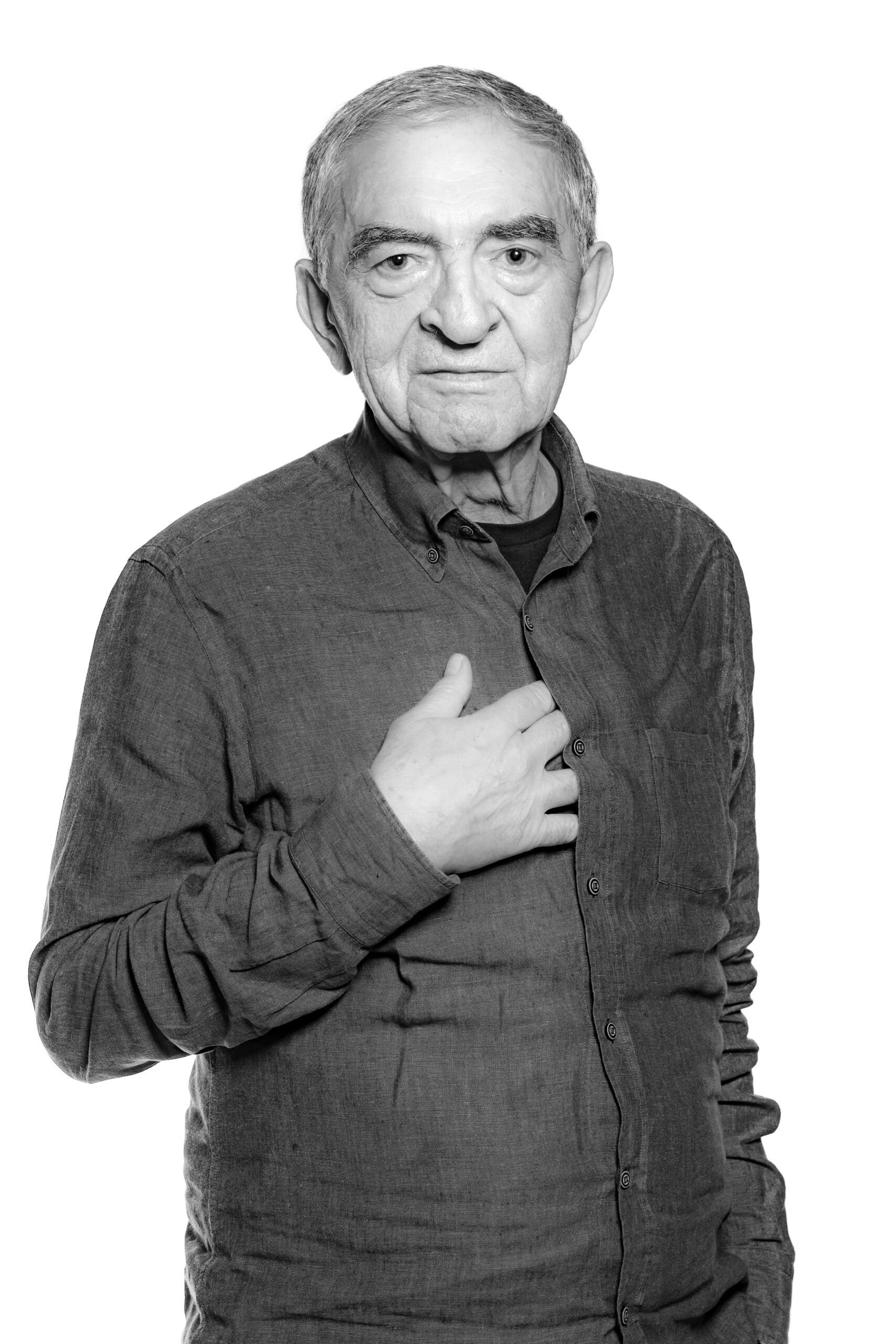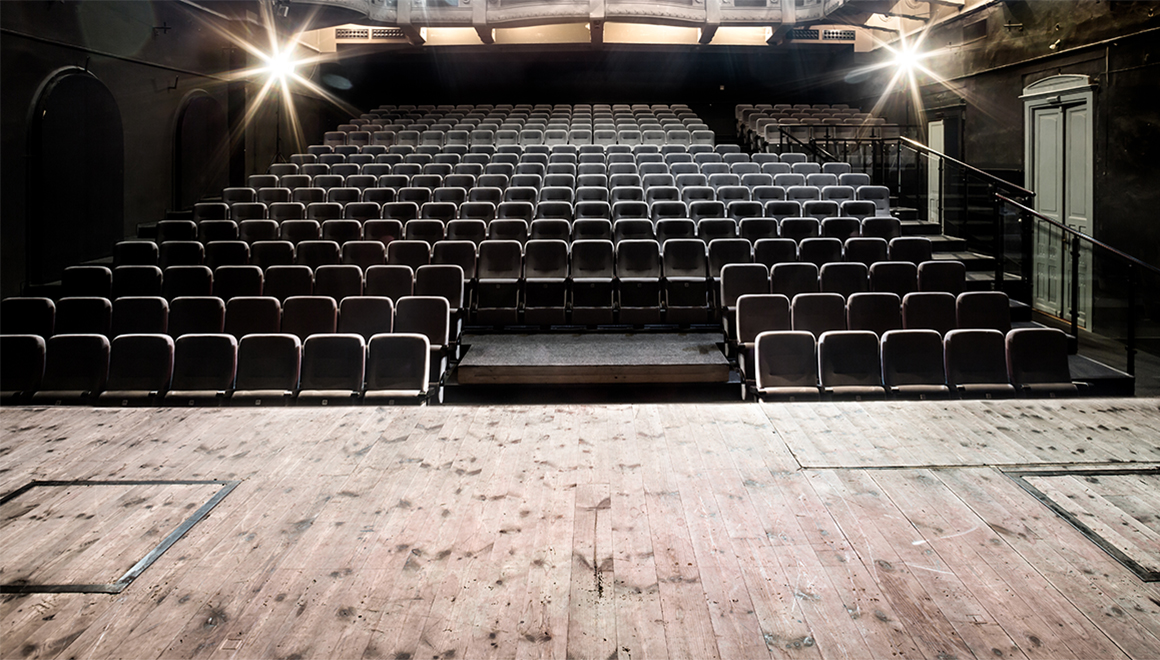Actors
Actors

Jerzy Trela
Graduate of the Acting Faculty of the Ludwik Solski State Theatre School in Krakow (1969)
An artist of vast talent and limitless capabilities: “Trela is phenomenal. To my mind, he has been touched by the hand of God, and is unaware of the depth of his talent. He uses it like the Aztecs, who used gold to make the simplest of tools. He is incredibly humble and modest. Jerzy is the extraordinary in the ordinary,” Jerzy Bińczycki said of him years ago at the Historical Museum during the opening of an exhibition devoted to the artist. In giving him the titular role in Ionesco’s “The King Is Dying, or: Ceremonies” (2008), director Piotr Cieplak took stock of Jerzy Trela’s artistic history, with all its richness, complexity, and “Aztec gold” amply bestowed upon him.
He began working on stage in 1961 in the Puppet Theatre in Nowa Huta, right after graduating from the Krakow Visual Arts Secondary School. In 1964, he joined the Groteska Theatre ensemble, in the late 1960s he co-created the STU Theatre. After his studies at Krakow’s PWST Theatre School (he graduated in 1969) and a season at the Rozmaitości Theatre, he was invited to join the Stary Theatre ensemble, making his debut as Filip in Rymkiewicz’s “King Mięsopust,” directed by Bogdan Hussakowski, on October 11, 1970. He has worked with a wide range of theatres, including the Narodowy, Dramatyczny, Na Woli, Ateneum, and Polonia in Warsaw, and the STU, Ludowy, and Juliusz Słowacki in Krakow. He remains affiliated with the Stary Theatre, where he has recently been seen in “The Hearing Trumpet,” directed by Agnieszka Glińska.
Dozens of roles created by Jerzy Trela at the Stary Theatre have made a profound mark on the postwar history of the stage. His collaborations with charismatic stage arranger Konrad Swinarski, from his part as Piotr in Iredyński’s “Farewell, Judas,” to his discovery of new meaning in characters from the Romantic tradition, such as Gustaw-Konrad in “Forefathers’ Eve” by Mickiewicz and Konrad in Wyspiański’s “Liberation,” teased out and shaped the actor’s remarkable personality. Stanisław Wyspiański is the author who determined Jerzy Trela’s place in the theatre. Whenever the actor returns to Konrad’s monologue from Act II of “Liberation,” beginning with the words “I wish that on a summer’s day, a sweltering summer’s day…,” which he first performed in 1974, we get the inescapable impression that no one will manage to perform Wyspiański’s text with such powerful truth and humanity again.
Trela honed his craft working under the masterful eye of Jerzy Jarocki, who spotted some utterly unique traits in his acting: a conscious distance, self-effacement, and a matchless sense of the grotesquely absurd. The artist performed in several dozen plays by Jarocki, including Witkiewicz’s “The Shoemakers,” where he created the grotesque part of Apprentice I, in a famous performance of Chekhov’s “The Cherry Orchard,” where his Yasha made out he was “cosmopolitan”; he also unearthed the comic potential in Zemlyanik in Gogol’s “The Government Inspector,” and his Clarin in Calderon’s “Life is a Dream,” a philosopher-jester, flatterer, and coward, was an ambiguous, complex sort of personality. His many years collaborating with a director as uncompromising, precise, and painfully consistent as Jerzy Jarocki bore fruit in such fascinating characters as the Father in Gombrowicz’s “The Wedding” and Mephistopheles in Goethe’s “Faust,” roles in which the artist, conscious of his maturity, almost touched the absolute.
Another inspiring phase was the actor’s work with Andrzej Wajda. Among the characters that emerged was a complex and equivocal Claudius in Shakespeare’s “The Tragedy of Hamlet,” the full-blooded and apodictic Sarmatian Notary Milczek in Fredro’s “Revenge” and the Poet in Wyspiański’s “The Wedding.” The visionary director Jerzy Grzegorzewski gave Trela a special place in his productions. Starting with the rebellious and headstrong Jasiek, a counterpoint of sorts to the other characters in “The Wedding,” through the horrifying and absurd Colonel Abłoputo in “So-called Humanity in a Frenzy” based on Witkiewicz, to his touching, symbolic presence in “Forefathers’ Eve—Twelve Improvisations” based on the drama by Adam Mickiewicz. Krystian Lupa discovered another secret in Trela, entrusting him with the title role in Wyspiański’s “The Return of Odysseus,” and years later returned to collaborating with the artist in Part II of Broch’s “The Sleepwalkers,” in which the actor created a compelling Joachim von Pasenow. He first worked with Mikołaj Grabowski in 1983, guest appearing at the Słowacki Theatre in his famous staging of “Irydion,” playing the immortal Masynissa, an incarnation of the eternal Satan. After years on the stage of the Stary Theatre, in a play called “Tango Gombrowicz” Grabowski built based on the “Diaries” and “Trans-Atlantyk,” Jerzy Trela played Gombrowicz, the writer’s alter ego; the monologue of the Old Actor in Wyspiański’s “Liberation” in Grabowski’s modern and subversive interpretation was a symbolic parable that he began years before with the great post-Romantic author. The audiences roared with laughter at his Major, which he played for many seasons in the theatre’s hit performance of Fredro’s “Ladies and Hussars” directed by Kazimierz Kutz (with whom the actor worked on many occasions, making some of the most outstanding Theatre TV productions)—it combined a mastery of craft, chiselled comedic form, and the actor’s natural gift for comedy. The same went for his work in the director’s next production, as the Priest lost in a symbolic station en route to the “new” Poland in Mrożek’s “On Foot,” which was grotesque, absurd, and dramatic.
Professor Jerzy Trela spent years teaching the actor’s craft to students at the PWST Theatre School in Krakow, and in 1984–1990 did the school proud as its rector. He has won many theatre, film, and television awards. In 2011, he was honoured by President Bronisław Komorowski with the Commander’s Star of the Order of the Rebirth of Poland.
